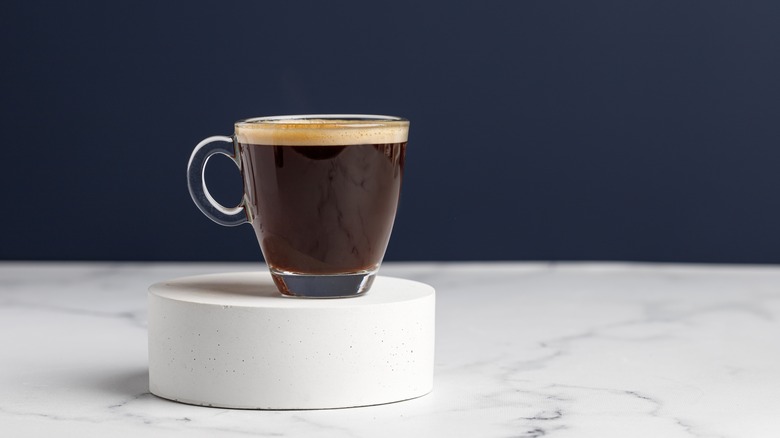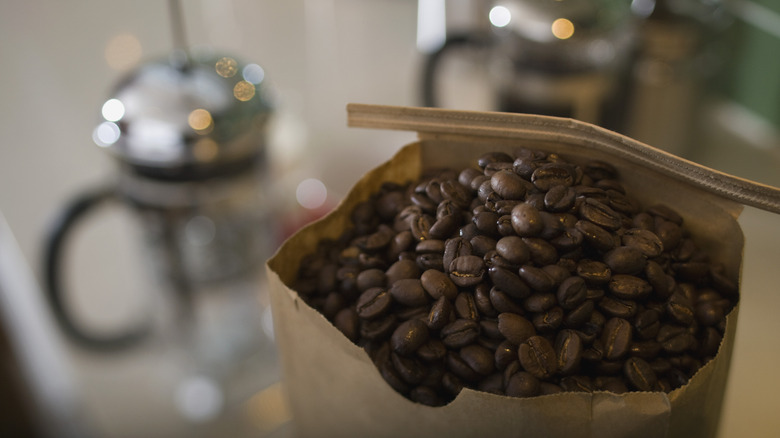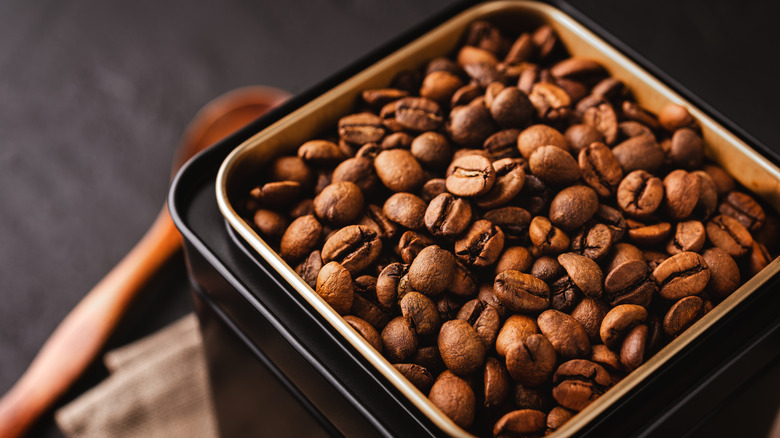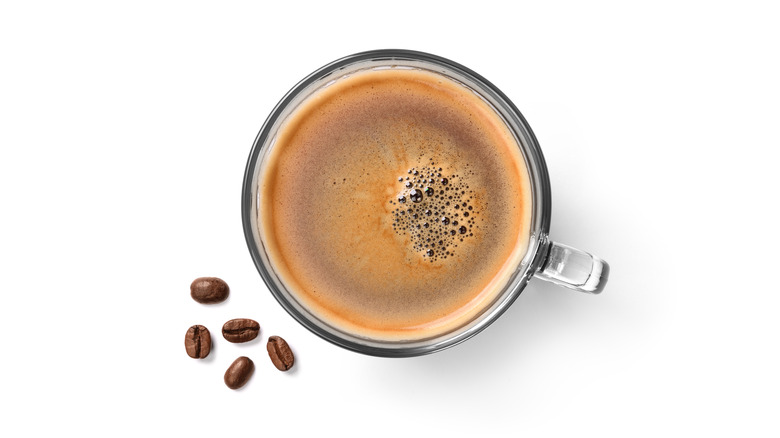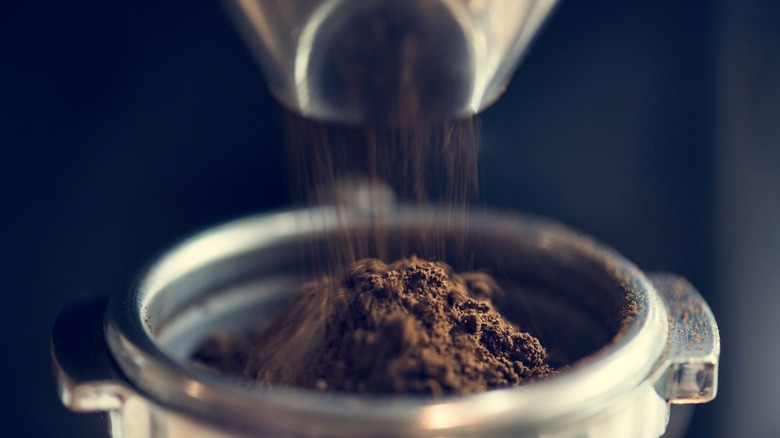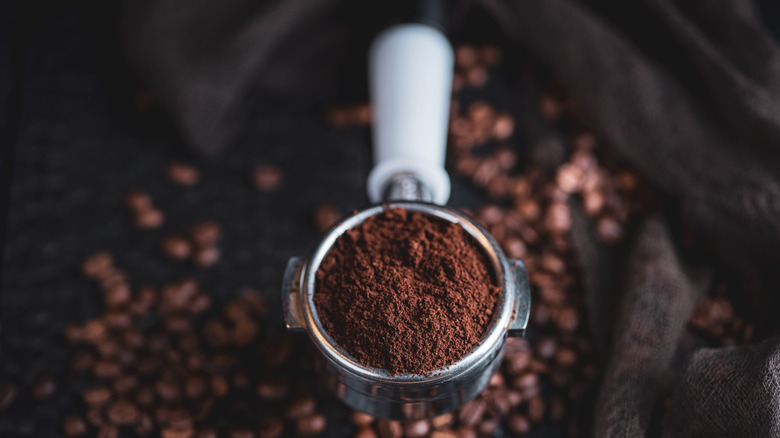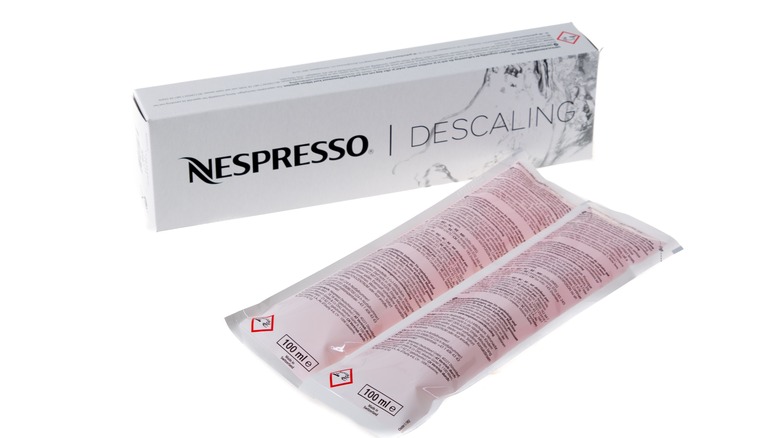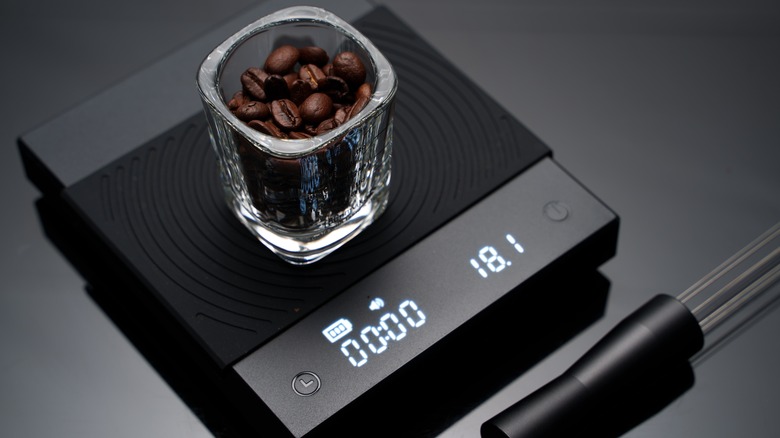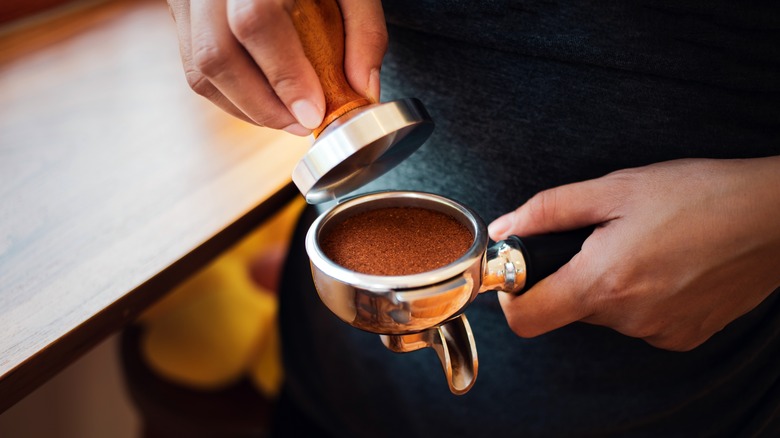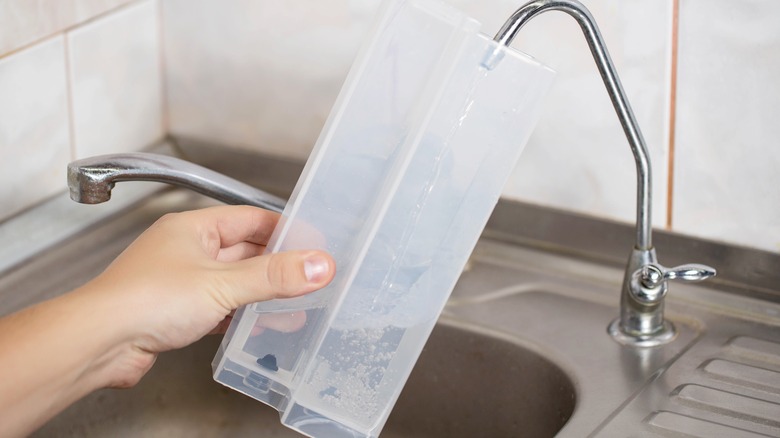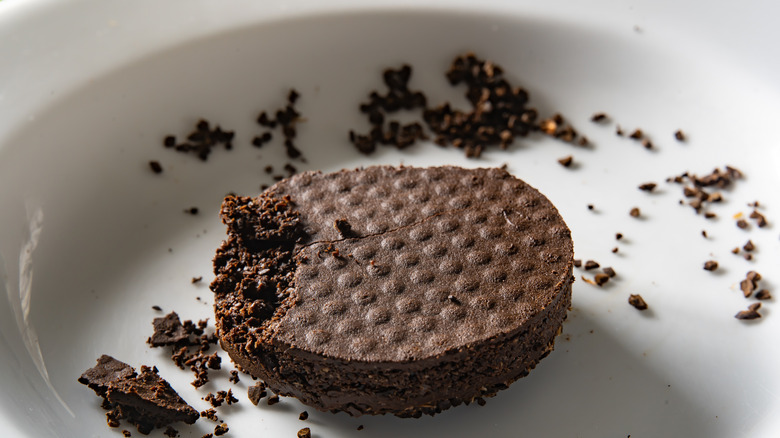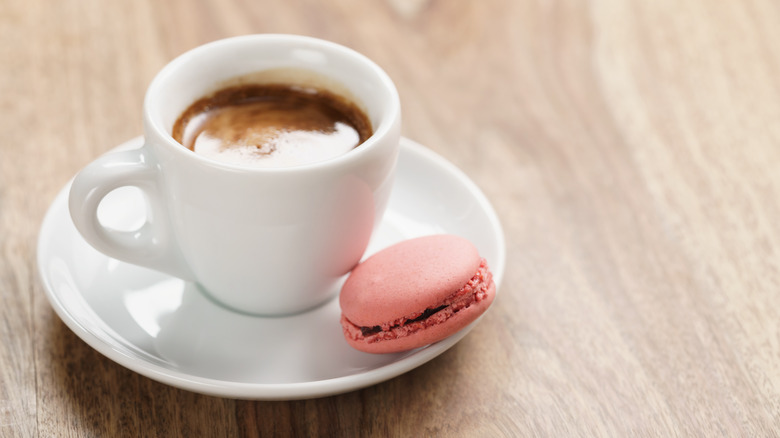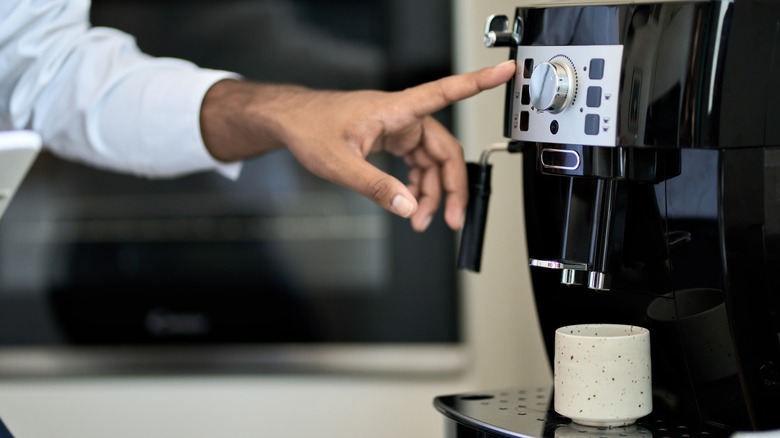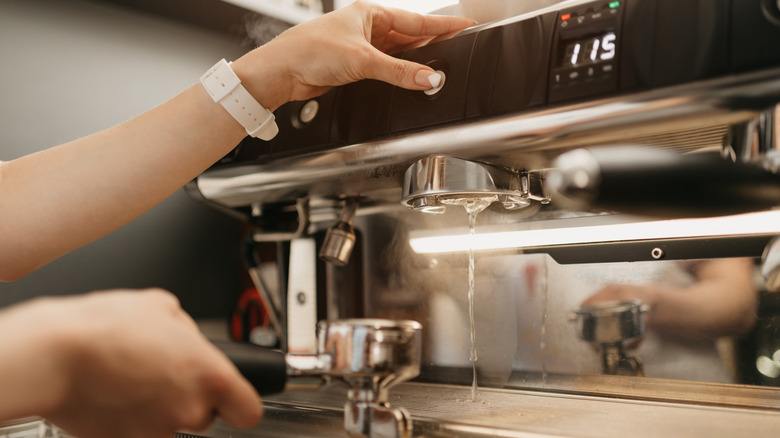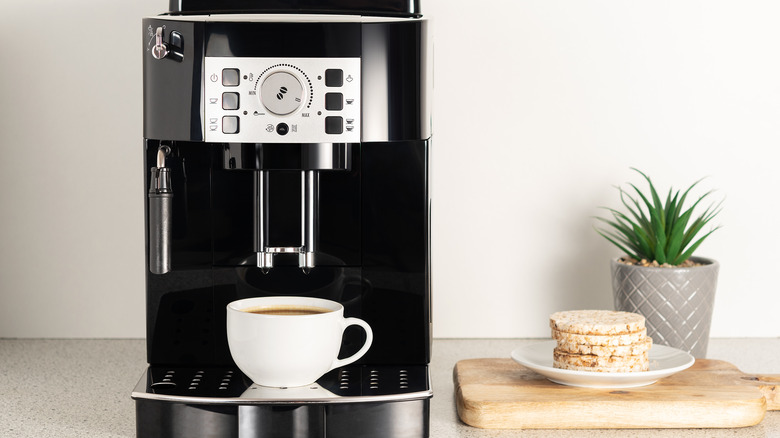15 Mistakes You Need To Avoid When Making Espresso At Home
The world would be a much sadder and less caffeinated place without espresso. Although it is commonly thought to be a type of coffee bean, espresso is merely a moniker for a small grind size and method of making java. Espresso is also made differently than other types of coffee; with espresso, a small amount of water is sent through a pressurized puck of coffee grounds to create a powerful, concentrated flavor in a small serving.
Espresso is a key component of several different coffee drinks, including lattes, cappuccinos, and americanos. But espresso is also a delicious beverage that can be consumed on its own. When sipped without the creamy assistance of milk, many coffee enthusiasts find the flavor of espresso to be mildly bitter, with tasting notes dependent on the coffee's origin and roast.
Despite espresso being a staple for coffeehouses everywhere, modern technology has brought this brewing method to the home barista. We've enlisted the help of Gen Kappler, Director of Coffee and Coffee Technologist at Roasting Plant Coffee, and Josh Stollenmaier, Senior Product Manager at Seattle Coffee Gear, to help provide some tips on how to make great espresso at home and to point out some of the biggest mistakes novice baristas make while pulling shots.
Using beans that are too old
Fresh beans are the key to a "coffee-shop quality" espresso shot, Gen Kappler notes. This is because as the beans are left on the shelf, they start to off-gas and lose their flavor. To reduce the time the beans are sitting around, Kappler recommends picking up beans from a local specialty roaster or ordering online for rapid delivery of beans straight to your door. Roasting Plant Coffee, for example, offers micro-batches of coffee shipped to customers. Purchasing smaller batches of coffee means you won't have to worry about your coffee sitting around too long and going stale.
Gen Kappler also recommends using coffee within seven to 10 days of roasting for the fullest flavor. If you use your coffee too soon, you risk a more acidic flavor profile. This is because the beans release carbon dioxide, converted into carbonic acid, during the first week of roasting. So you want to wait long enough to allow the beans to off-gas adequately, but not so long that they decline in quality.
Not storing your beans with quality in mind
Ordering fresh coffee is only part of the battle. You'll want to ensure your coffee beans are stored correctly to maximize freshness, aroma, and flavor. "People don't typically think of coffee beans as a food that can go bad," Gen Kappler notes, "but coffee drinkers should treat their coffee beans like fresh fruit and vegetables or baked goods."
Like other groceries, the primary enemies to coffee include light, heat, moisture, and air. Gen advises all home baristas to store their coffee in airtight containers in a cool, dark place. It's not a good idea to refrigerate coffee because the changes in temperature in your refrigerator can cause condensation — meaning that your coffee can be more readily exposed to moisture than if it was left in a dark cabinet in your kitchen. If you're storing your coffee in a bag, try to find one with a one-way valve allowing carbon dioxide expulsion. If you're going with an airtight container, Kappler recommends leaving a few inches of space between the beans and the top of the jar to protect from oxidation.
Not being able to recognize the signs of a rancid brew
If you don't readily keep track of the roasting date on your beans, you may find that you're constantly brewing with stale beans. Signs of staleness can be both aromatic and visual when it comes to espresso. Fresh espresso has a thin layer of oil on top, called the crema, which forms after it's finished brewing. The absence of foam may mean it's time to toss your old beans out. If you're brewing with a medium roast coffee and see a shiny layer of oil on the top, Gen Kappler notes that this is another visual indicator that the rancid oils have risen to the bean's surface and that the coffee needs to be thrown out.
From an aromatic perspective, your cup of espresso should smell like a fresh cup of coffee should. If you notice a dull aroma — both before and after the coffee is brewed — you should double-check the date on your bag. The perfect coffee flavor is also deliciously complex; a flat taste can also indicate stale or rancid beans.
Forgetting to clean your grinder often
Neglecting to clean your grinder regularly may be why your espresso shot tastes off. The oils and pieces of beans can get stuck in the burrs of your grinder and become spoiled. To prevent this, Gen Kappler of Roasting Place Coffee recommends cleaning your espresso grinder at least once a month if you're making up to 10 shots of espresso per day. If you run your grinder once every few weeks or months, you should prepare it for storage by emptying the beans out and using absorbent paper to clean up the residual oils.
The best tool to clean up the oil residue is likely already in your cabinet: rice. All you need to do is add 50 grams of rice to your grinder and blitz until the rice is a fine powder. The rice won't impart any strange flavors as a harsh cleaning product would — plus, the particle size of the rice is perfect for absorbing any residual oils or particulates. Once you finish using the rice method to clean your hopper, Kappler recommends flushing the grinder with coffee beans and grinding until no white rice residue remains.
Grinding your beans too finely or too coarsely
It's important to remember that espresso is a type of grind — not a roast. Therefore, getting the perfect grind size is paramount to brewing a delicious espresso shot every time. If your espresso tastes sour, it may be because you ground your beans too finely. Finely-ground beans are easy to over-tamp, which will, in turn, prevent water from flowing through the portafilter and over the beans. If your beans are too coarse, that means there isn't enough surface area to extract flavor from, so you'll find that your espresso has a dull or bitter taste.
The perfect grind size that is neither over- nor under-extracted is around 0.8 millimeters. This measurement is slightly finer than table salt. In comparison, drip coffee should have a medium grind — about the size of sand. If you're using an automatic grinder to grind espresso beans, try setting the machine on medium-fine (dials 4 to 6, per Josh Stollenmaier of Seattle Coffee Gear) and adjusting the grind from there.
Failing to descale or clean your espresso machine correctly
If you want to keep your espresso up to par, you must keep your machine maintained. If you have a "super-automatic" machine, the appliance will usually prompt you to clean it after a certain number of uses. You may also see a function to descale your device as well. While you may be too preoccupied with other tasks to do anything but press the "ignore" button, you should be aware that your espresso will suffer if you are negligent with cleaning your tools.
Espresso machines are filled with moisture and heat — which are breeding grounds for mold. Not only can these molds, mildews, and bacteria create major flavor issues, but they can also make you sick. Gen Kappler recommends sticking to a commercial coffee machine cleaner rather than at-home mixtures of vinegar, baking soda, or lemon juice to clean your machine. Not only are commercial cleaners effective, but these chemicals also do not leave any aftertaste or residue that can mess up the flavor of your coffee.
Neglecting to invest in a scale
Many coffee novices avoid purchasing expensive coffee scales at the start of their barista journey. However, Gen Kappler, the Director of Coffee and Coffee Technologist at Roasting Plant Coffee, advises home baristas to invest in a good scale if they are a true "coffee geek," noting, "If you've purchased a traditional home espresso machine, you're a coffee geek who wants to eliminate any variable that would prevent you from consistently pulling a great shot every time, so you need a scale for that."
Gen recommends home baristas start basic and purchase a scale with at least a 0.1-gram precision. You should also look for a scale that is very sensitive and displays accurate measurements relatively quickly. The timer feature on some of these scales allows the barista to definitively measure the brew length — the amount of time it takes for the water to pass through the grounds — thus indicating how well extracted the coffee is. While not all espresso scales have this feature, it is helpful for baristas looking to get their great shot down to a science.
Inconsistently tamping your espresso
One of the biggest mistakes people make with espresso is not evenly tamping their grounds into the basket. Not pressing the espresso enough means your grounds won't be under the proper pressure to brew. Moreover, tamping your espresso inconsistently can create under and over-extraction spots, leaving the barista with areas of bitter and sour coffee.
Gen Kappler notes that the tamp is rarely ever perfectly even — unless you're using a lever. Regardless, there are some ways that you can get a more even tamp every time. She recommends putting the grounds into the portafilter and evenly distributing the ground without pressing. The "right dose" should not be higher than the basket's rim.
When you are ready to tamp, Josh Stollenmaier recommends applying between 20 and 30 pounds of pressure to the tamp – it will feel like you're pressing into the countertop, or flat surface, underneath you. Kappler notes that keeping a right angle between your shoulder, arm, and forearm to press down vertically onto the tamp will result in more consistent pressure. Once you do the first tamp, Gen suggests doing a 360-degree turn over the coffee to check for levelness.
Using the wrong type of water for your espresso machine
Is all water created equal when it comes to espresso machines? Josh Stollenmaier says no. Filtered water is the best kind of water to use for brewing because it contains a low minerality. Minerals like calcium and magnesium can give your espresso a sour taste. The filtration process removes these minerals from your water — which will also reduce the number of times you have to descale your machine. Stollenmaier notes that many machines come with water hardness scales for users to test the minerality of their water before adding it to the machine.
Suppose low minerality is ideal for a good cup of espresso. In that case, your inclination may be to use distilled or reverse osmosis water for your coffee — since its minerality is much lower than filtered water. But, using these types of water can corrode your machine and cause more damage than good.
Getting lazy with cleaning your portafilter
Removing the puck of spent grounds from your portafilter is one of the last steps you need to take after you brew your espresso. Leaving your puck in the basket for too long can cause it to be especially difficult to remove, so we recommend popping out the puck as soon as you finish brewing. If you leave the puck in the basket without properly cleaning it in between shots, you risk passing on a burnt or rancid flavor to subsequent espresso shots.
Gen Kappler recommends doing what commercial coffee shops do — remove the portafilter nightly, clean the basket with a brush and cleaning powder so they look sparkling, and even soak the basket in water overnight to flush any residual oils or particles off. You can toss your spent puck into the trash or up-cycle it into your compost pile as an insect repellent and garden fertilizer.
Not pulling your shots based on your desired flavor
You've probably heard the phrases "single shot" and "double shot" when it comes to espresso, but have you heard the difference between a "ristretto" and a "lungo?" These are the terms for short-pull and long-pull espresso — and they have an important impact on the flavor of your shot.
Ristretto is Italian for "restricted" – the pull earned the name because it is quicker to brew than a lungo and has a more concentrated, sweet flavor than the latter. The ristretto has a brew ratio of 1-to-1, meaning that it uses equal parts water to coffee. The lungo has a greater volume of espresso with a more subdued flavor. It can take up to 40 seconds to brew and has a 1-to-3 brew ratio of coffee to water. A doppio, or a double shot, is made with a 1-to-2 ratio and brewed for up to 30 seconds — thus is more concentrated than a long shot but has a greater volume than a ristretto.
The choice of which shot to pull depends on the flavor you desire from the coffee. Many baristas use ristrettos for hot or iced drinks because of the strong coffee flavor. Lungos are excellent for determining an espresso's tasting notes and origin flavors.
Using pre-ground coffee
Realistically, we would all love to have a fresh, endless supply of coffee beans shipped to our doorstep. But in reality, pre-ground coffee is a lifesaver for busy mornings on the go. If you want the best cup of espresso at home, Josh Stollenmaier suggests avoiding the easy way out. He notes, "While pre-ground coffee may work in an emergency, you'll find much better results if you use fresh-roasted coffee grounds in your own home."
The science behind why ground coffee goes bad faster than whole beans is pretty simple. Grinding coffee brings the oils from inside the bean out, thus increasing the opportunity for exposure to moisture and oxygen — two of coffee's greatest nemeses. According to Coffee Confidential, ground coffee loses 60% of its aroma during the first fifteen minutes after roasting. It can also cause carbon dioxide to release more rapidly from the beans than if they were left whole; 80% is off-gassed within a minute of roasting. Since the carbon dioxide interacts with the oils in the beans, you'll find that too large of a time interval between grinding and brewing will result in a staler flavor.
Not taking cues from your shot of espresso
Josh Stollenmaier notes that one of the biggest mistakes people make with espresso is not taking cues from it. Taking a couple of seconds to look, smell, and taste your espresso during and after the brew is vital to improving your cup. Extraction times, channeling, bitterness, and sourness indicate that you're pulling a less-than-optimal shot.
Extraction times are important to observe if you don't have a timer handy. If your shot is pulling too fast, tastes sour, and doesn't have a thicker consistency at the beginning of the brew, you may need to grind your beans finer or increase the number of beans in the portafilter. If you find the brew takes too much time to pass through the portafilter or has a bitter taste, your coffee may be ground too fine, or you put too much in the basket.
You can also troubleshoot your espresso by watching how it drains from the machine. For example, if you notice only part of your portafilter is draining, this may indicate an uneven tamp.
Forgetting to purge the machine in between shots
Purging water in between shots is critical to maintaining your machine's health. This step only takes a few seconds and can be done when you empty your portafilter and rinse out any pesky, stuck grounds. Pulling out the portafilter exposes the machine to temperature instability. To cancel out the effect of air going into the lines of the device, you can purge hot water through the machine to help it regulate heat. Some machines will run this process automatically, while others will prompt the user to do it themselves.
Purging water is vital for single-boiler machines — where the heater for the espresso and the steam wand are combined into one unit — especially because running leftover water can cool the boiler down. If you neglect to cool the boiler, the water that hits your espresso may be too hot, resulting in an over-extraction in flavor from your next shot.
Always going for the most expensive machine
Nothing in this world is cheap — especially espresso machines. When you're shopping for a machine, you need to consider your level of skill, as well as how much you're willing to spend. Realistically speaking, your machine should outweigh the costs of purchasing expensive takeout coffee as regularly as you do. If you find yourself ordering a macchiato or a cappuccino once a month, you can settle for a $200 espresso machine like the Wirsh. It's a great entry-level stainless machine that has a steam wand attachment.
If you consider yourself an espresso novice and want to stay that way, you can purchase a compact automated espresso maker from Nespresso. On the other side of the spectrum, our favorite brand for self-proclaimed coffee geeks is Breville. Its entire line of espresso makers is super reliable and of professional-grade quality. You can also purchase its 3-in-1 machines with a grinder attached — just make sure you remember to clean it out.
